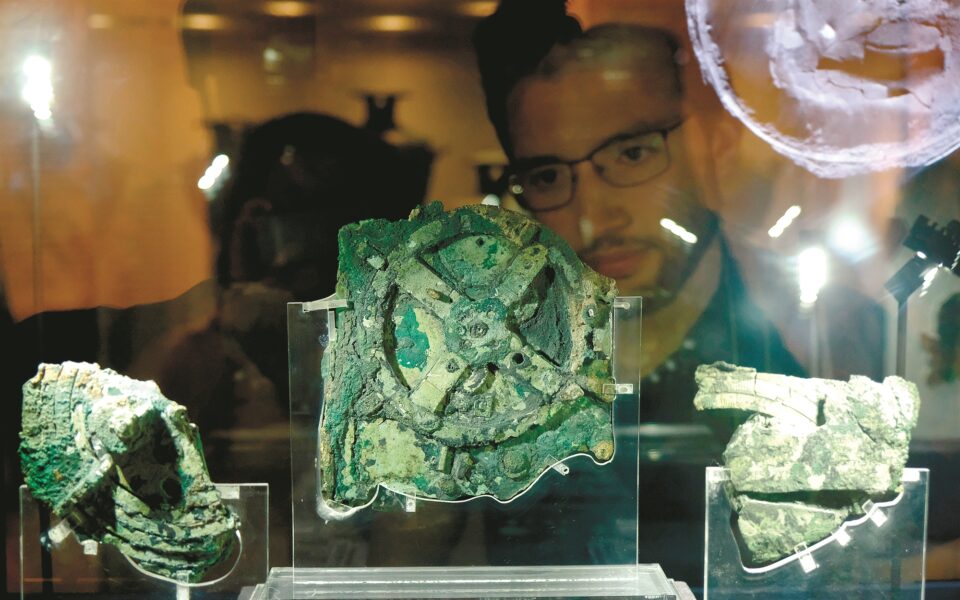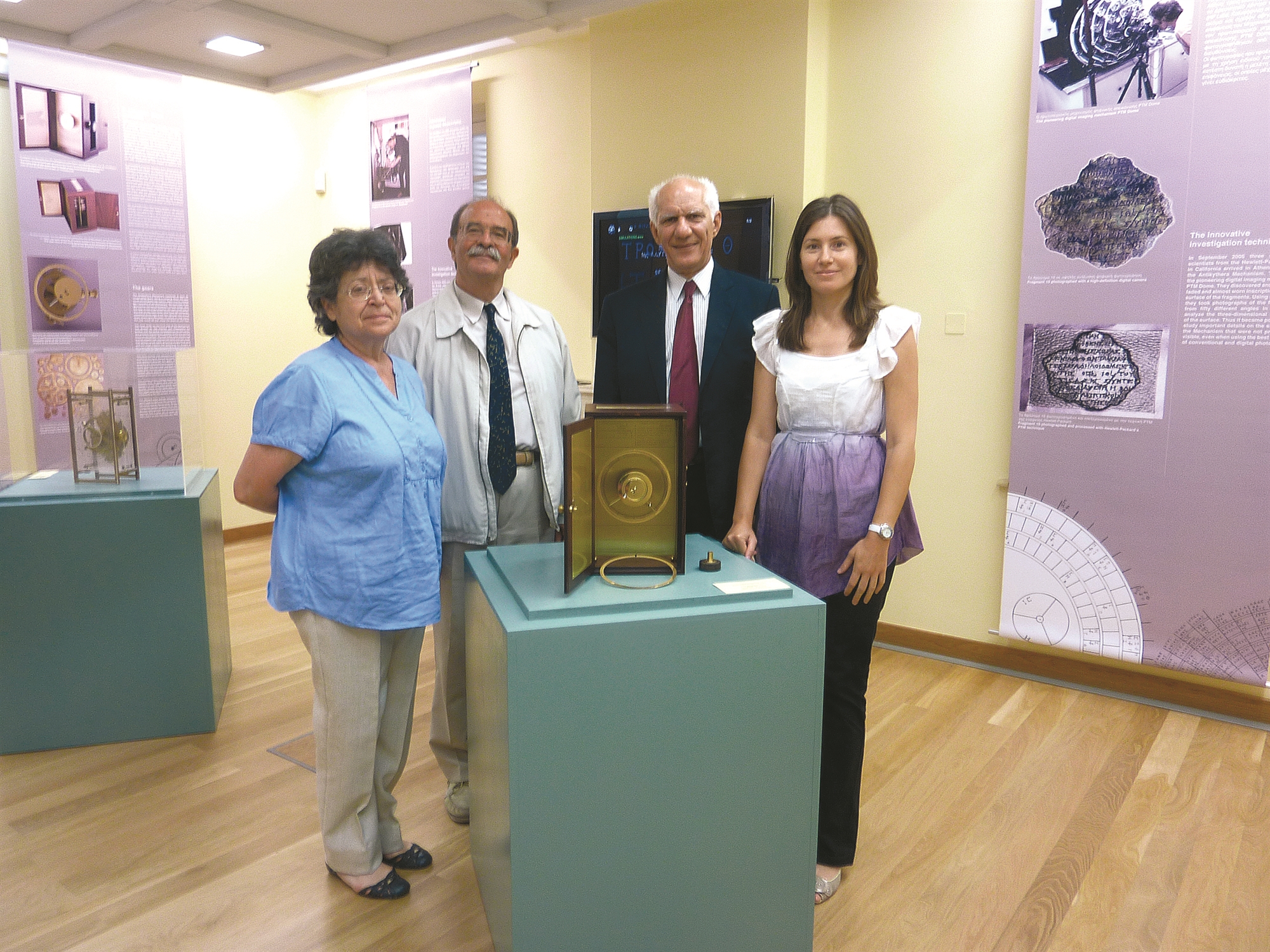Antikythera Mechanism: A crowning achievement of ancient technology
Expert shares her fascination with the Antikythera Mechanism with Kathimerini and tells us why it is so important

It was sometime between 1900 and 1902 when an ancient Greek shipwreck was discovered off the coast of Antikythera, south of the Peloponnese, and inside it, a mysterious mechanism with intricate inner workings. Some 120 years have passed since then and we are now in the position to know that it was not an astrolabe or a compass, not some complex nautical instrument, as had been originally thought.
The Antikythera Mechanism, as the device has been dubbed, is a marvelous achievement that serves as testament to the ancient Greeks’ advanced knowledge of astronomy and engineering. We may not know why precisely it was built or have recovered all of its components, but scientists still know that it is something quite special.
Magdalini Anastasiou has spent years studying the Antikythera Mechanism, which was the subject of her PhD at the Aristotle University of Thessaloniki and a new book published by Ropi in Greek with a prologue by the esteemed academic Giorgos Grammatikakis, a physicist, writer and dean emeritus of the University of Crete.
In an interview with Kathimerini, Anastasiou explains why the Hellenistic mechanism is regarded as mankind’s first analogue computer and stresses that there is still much to be learned, despite the progress made in its study.
What is it that drew you to the Antikythera Mechanism?
As far as I’m concerned, it is the single greatest achievement of the ancient minds. It is a machine whose main function is to simulate something incredibly complex, and that is the night sky with the moon, the sun and the five planets that are visible to the naked eye: Mercury, Venus, Mars, Jupiter and Saturn. The ancient Greeks observed the night sky closely using very simple means and drew very scientifically apt conclusions, but they also went far beyond that, constructing a mechanism with hands – one for each celestial body – that rotated just as those bodies did in the sky. Their passion for precision also made them top engineers and the mechanism is proof of the incredible sophistication of the ancient Greeks’ knowledge of astronomy and mechanics.
It has been described as mankind’s first analogue computer. What was so pioneering about it?
Everything about the Antikythera Mechanism is innovative, I would say. The very idea to make such a device, for starters. Then you would have to understand how each planet moves and to have constructed an astronomical theorem predicting the movement. That theory then needs to be translated into gears and axles calculating their position. It takes a great number of cogs and an ingenious diagram of where and how they’re placed. And if you want all these components to move simultaneously, to have a machine that is relatively small and one that also has other functions delivering the sum of your astronomical knowledge – such as calculating eclipses, for example – then we’re talking about something that is almost impossible. If the mechanism had not been salvaged, no one today would have believed it ever existed.
Do we know why exactly it was made?
No, not exactly, but we are fairly certain about some things. We see, for example, the mechanism as an effort to demonstrate the totality of knowledge of astronomy at the time. What we don’t know exactly is how the idea was conceived and why. Whether the purpose was to simply see if they could make such a machine or whether the machine was meant to be used, at an astronomy school, say.
‘If the mechanism had not been salvaged, no one today would have believed it ever existed’
Apart from its enormous astronomical interest, what other uses did it have?
It had two additional functions of a more social nature. The most characteristic is calculating the timing of Panhellenic games like the Olympics – the Nemean, the Isthmian, the Pythian etc. The second is a calendar with the cycles of well-known stars marking practical activities such as the start of seeding.
When and where was the mechanism constructed?
It was during the Hellenistic period. Based on the lettering, it has been dated to between 150 and 100 BC, with a 50-year margin of error. We still do not know where it was made, though the main theories are Rhodes, where the 1st century BC astronomer Posidonius lived, or Syracuse, home of Archimedes.
Is this mechanism the crowning accomplishment of an evolutionary process, or is it possible that there were others like it we just don’t know about?
The variety of functions, the precision of its calculations, the arrangement of the gears, the inscriptions and the relatively small size all tell us that it was the result of an evolution of such mechanisms. There must have been others, a few of course, of a simpler type. Maybe they were recycled for their bronze or maybe we will find them at some point. What we do know is that Cicero knew of three – two belonging to Archimedes and one to Posidonius.
Does the mechanism hold more secrets? Are we in a position to say which parts are missing and what they did?
Unfortunately, the mechanism survives in fragments. Apart from the fact that sections are missing from all of its sides, the entire system of gears that calculated the movement of the five planets and would have been attached to the front is also gone. We are optimistic that the underwater excavations may still bring it to light.
What were some of the key challenges faced by modern-day researchers in cracking its code?
Being in the water for so long had made the fragments very brittle and calcified. Even after they were cleaned, the structure inside was not visible, but everyone was fascinated by the few gears that were. “It looks complex, but what is it?” they wondered. The advent of X-rays in 1971 and scans in 2005 became the only keys to really unlocking its secrets.
In 2008, the Aristotle University of Thessaloniki built a model of the mechanism that has been redone twice, in 2011 and 2016. How precise is it and what sets it apart from others like it?
The guiding principle of all the likenesses built by our team at the Aristotle University, under the supervision of Kyriakos Efstathiou, a professor in the Department of Mechanical Engineering, is that they should be as precise as possible. They are modified in line with the new research, so that each new copy includes the latest confirmed findings.






